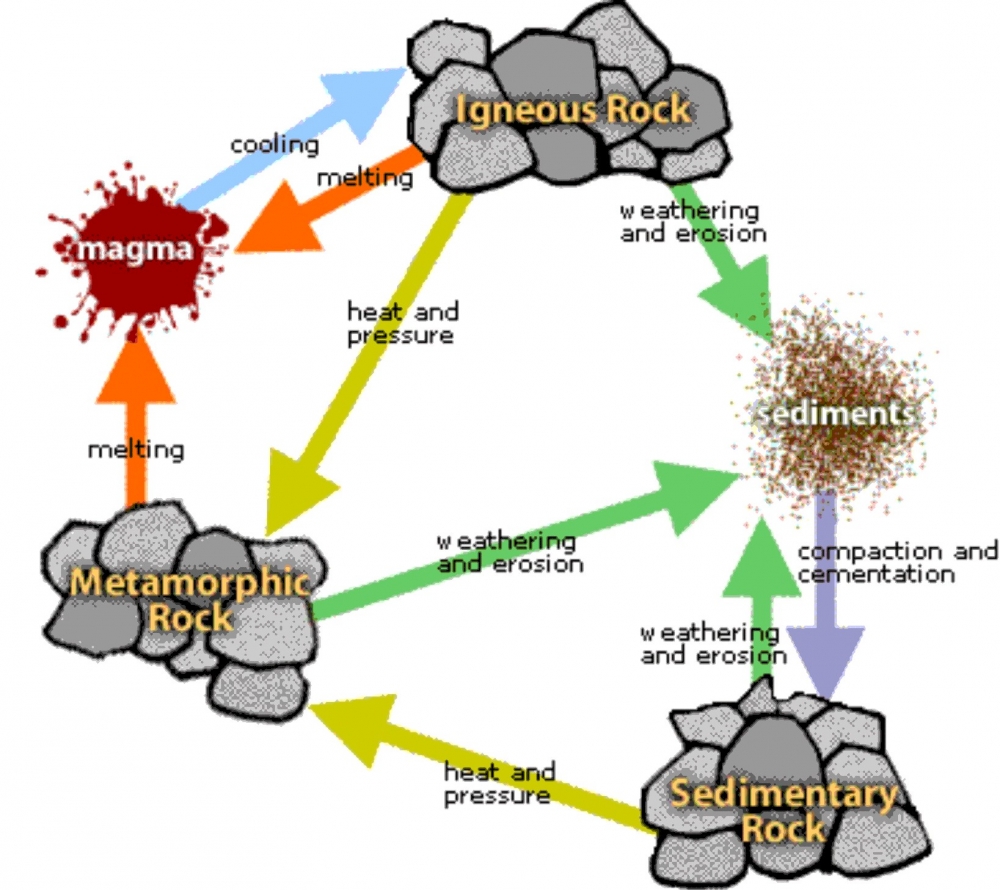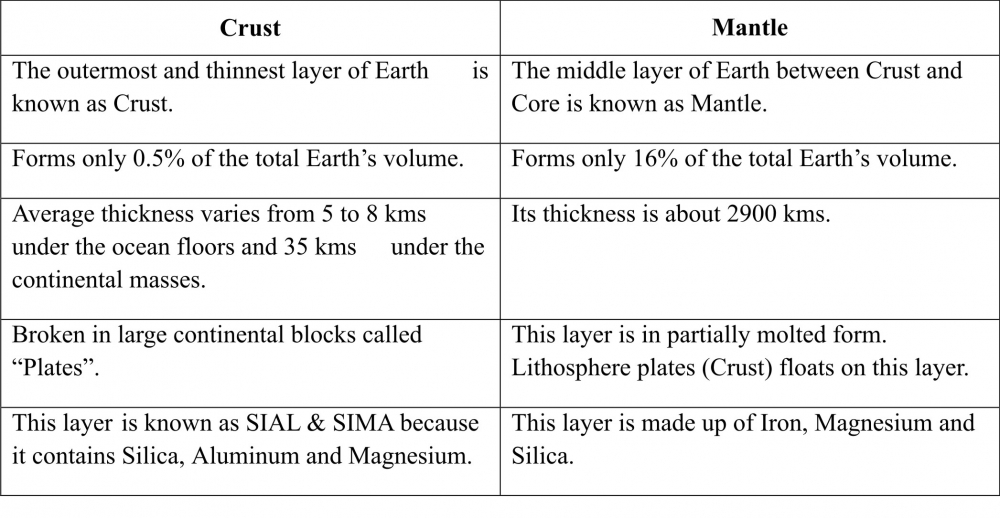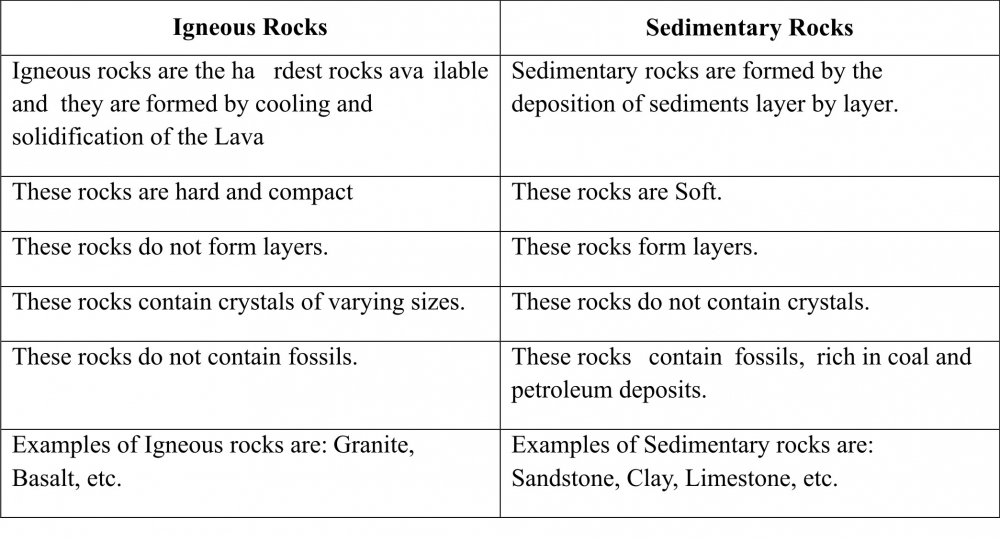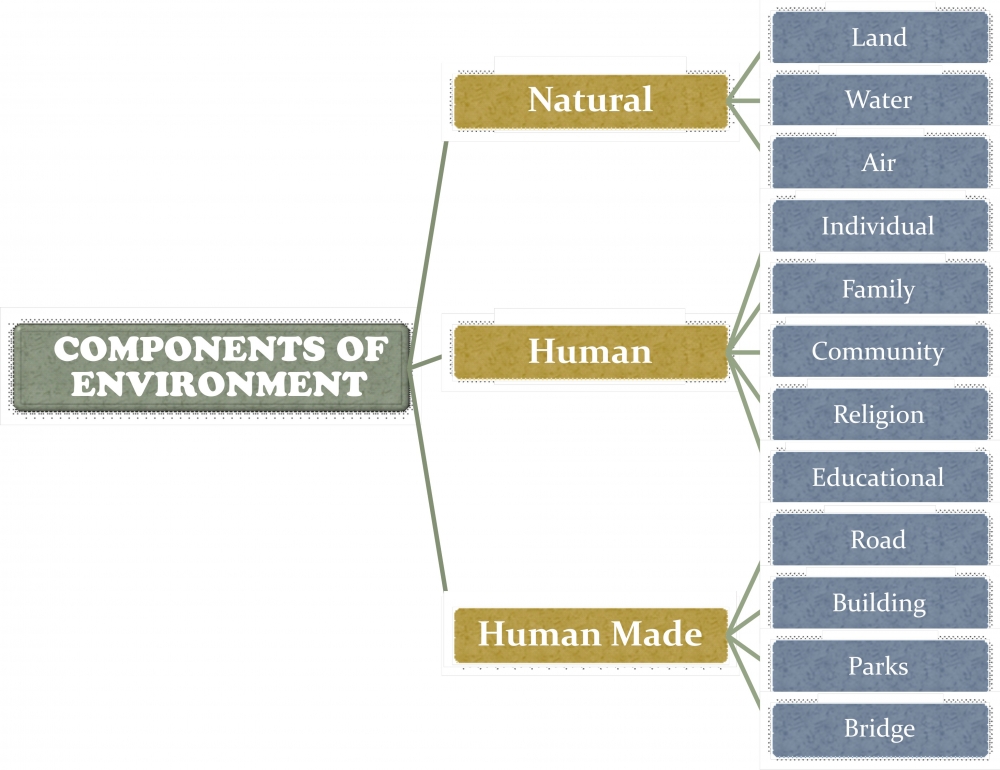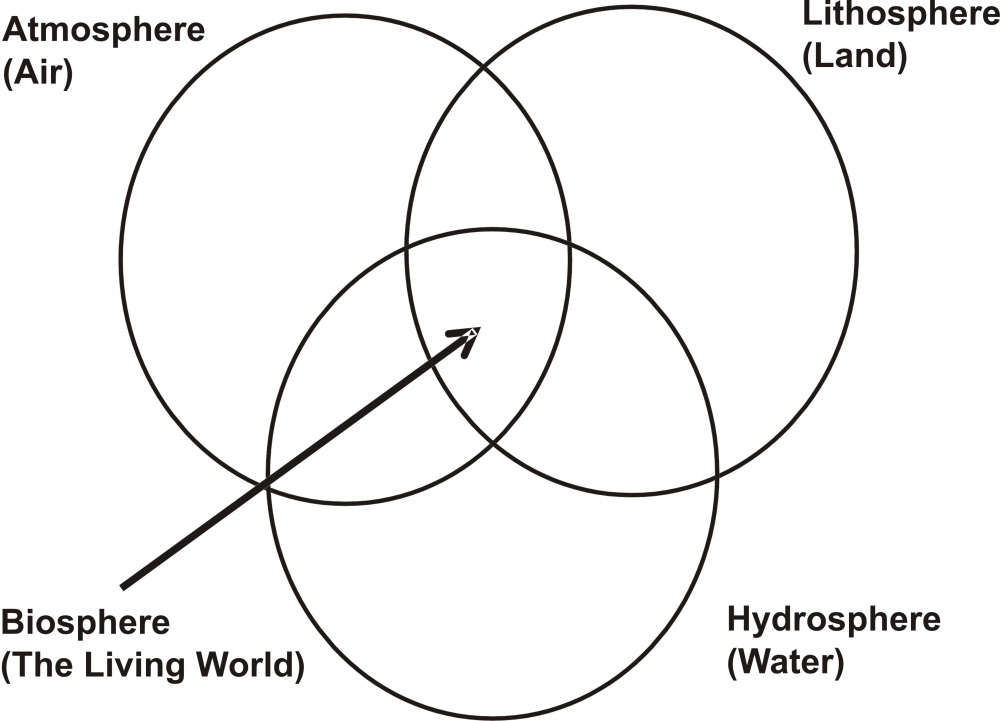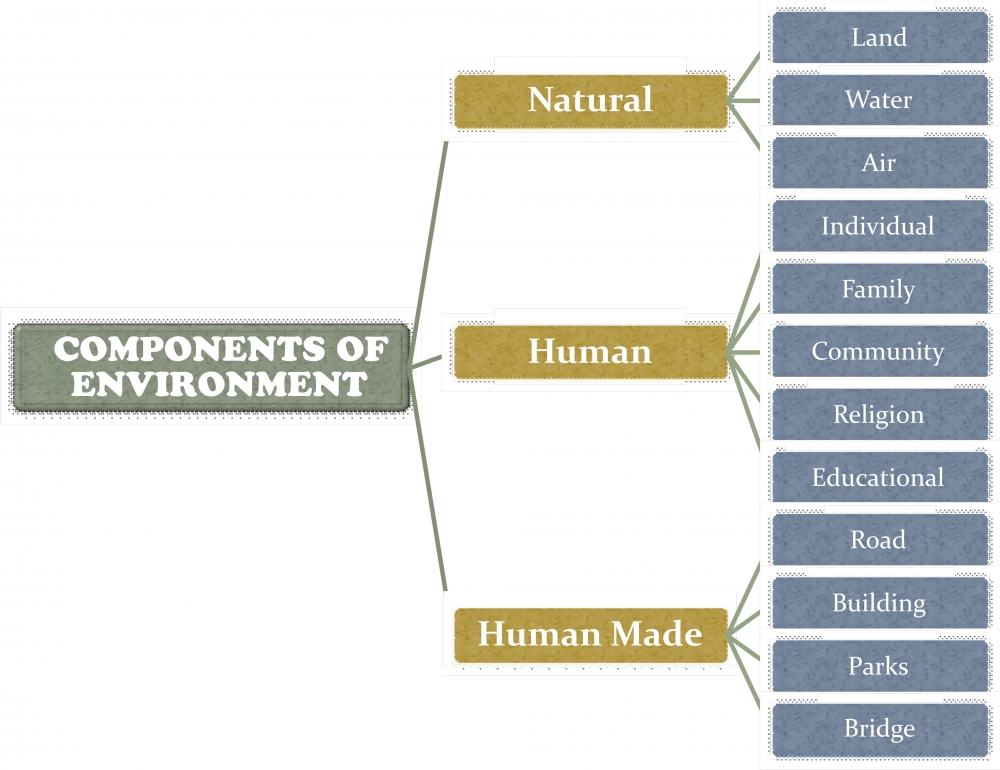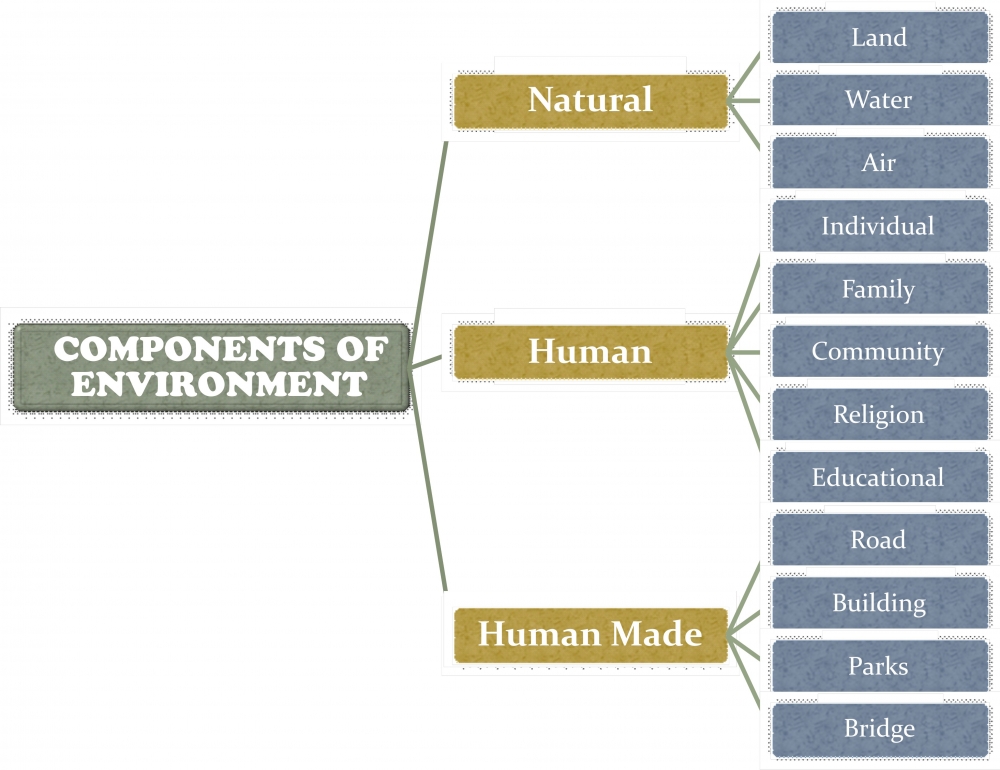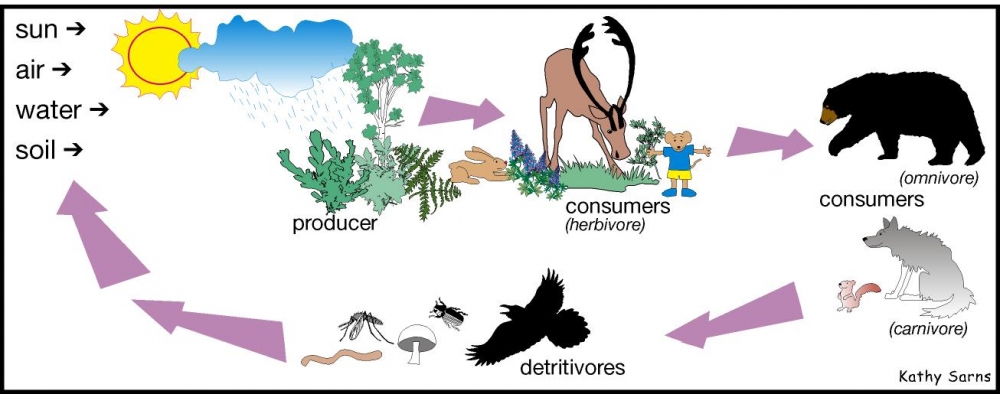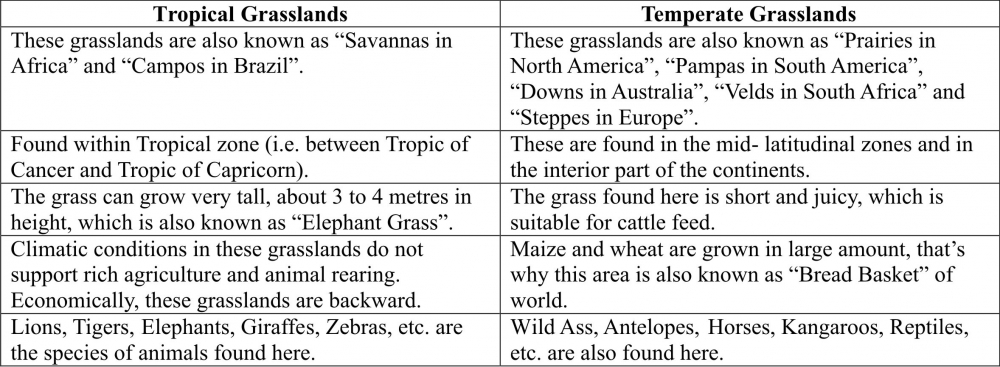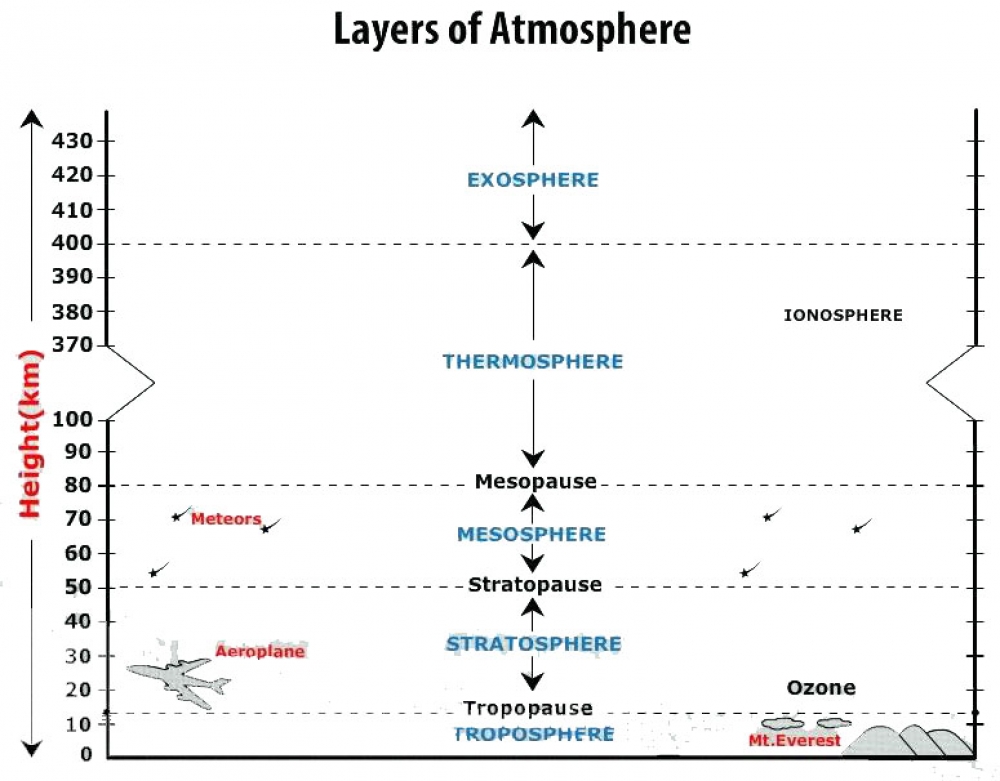Class VII: Chapter 3 (Our Changing Earth) Question & Answer
Very Short Answer Questions
Q1. Define: (a) Endogenic Forces (b) Exogenic Forces (c) Lithospheric Plates
Ans 1:
(a) Endogenic Forces: Forces which are working in the interior of the earth leading to earth movements, earthquakes and volcanic eruption are known as endogenic forces.
(b) Exogenic Forces: Forces which are working on the surface of the earth leading to the erosional and depotional features of wind, water and ice are known as exogenic forces.
(c) Lithospheric Plates: The crust of the earth is broken into a number of large and small plates known as the lithospheric plates.
Q2. What is volcano? What are its types?
Ans 2: Natural openings in the earth's crust through which molten materials, rocks, ashes, gases, etc are thrown out are called 'Volcanoes'. Volcanoes are classified into three types:
(a) Active Volcanoes: These volcanoes erupt frequently and give out gases, ash, lava, etc. e.g. Mt. Etna in Italy.
(b) Dormant Volcanoes: These are also known as 'Sleeping Volcanoes'. They erupt after a very long time. E.g. Mt. Vesuvius in Italy.
(c) Extinct Volcanoes: These are also known as 'Dead Volcanoes'. They have been inactive since a very long time. E.g. Mt. Kilimanjaro in East Africa.
Q3. What do you mean by 'Focus' and 'Epicentre'?
Ans 3: Focus: The point of origin of an earthquake is called its Focus.
Epicenter: The point directly/vertically above the focus on the earth's surface is known as Epicenter.
Q4. What are meanders?
Ans 4: Curves and large bends or loops formed by rivers in the plains are known as meanders.
Q5. Define the term 'Aggradation'.
Ans 5: The process of depositing the eroded material is called aggradation.
Short Answer Questions
Q6. How does the process of gradation creates various landforms?
Ans 6: The surface of the earth is continuously undergoing changes. Running water, moving ice, wind and waves are the main agents of gradation which continuously wear down the land surface and carry the broken fragments which are deposited in the low lying areas.
The process of reduction of height of landform is called 'degradation'. The process of depositing the eroded material is called 'aggradation'. Aggradation and degradation are the two main ways which as continuously at work creating different landforms on the earth surface.
Q7. What do you mean by erosion? What are the main agents of erosion?
Ans 7: The removal of outer layer of rocks in the natural environment is called erosion. The main agents of erosion are water, wind and ice.
Long Answer Questions
Q8. Give a detailed account of the features formed by Wind, Waves and Ice.
Ans 8: The features formed by wind are as follows:
(a) Mushroom Rocks: In deserts you can see rocks in the shape of a mushroom, commonly called mushroom rocks. Winds erode the lower section of the rock more than the upper part. Therefore, such rocks have narrower base and wider top.
(b) Sand Dunes: When the wind blows, it lifts and transports sand from one place to another. When it stops blowing the sand falls and gets deposited in low hill – like structures. These are called sand dunes.
(c) Barkhan: A crescent shaped sand dune is called a barkhan.
(d) Loess: When the grains of sand are very fine and light, the wind can carry it over very long distances. When such sand is deposited in large areas, it is called loess.
The features formed by sea waves in the coastal areas are as follows:
(a) Sea Caves: Sea waves continuously strike at the rocks. Cracks develop. Over time they become larger and wider. Thus, hollow like caves are formed on the rocks. They are called sea caves.
(b) Sea Arches: When these cavities become bigger and bigger only the roof of the caves remain, thus forming sea arches.
(c) Stacks: Further, erosion breaks the roof and only walls are left. These walls like features are called stacks.
(d) Sea Cliff: The steep rocky coast rising almost vertically above sea water is called sea cliff.
(e) Beaches: The sea waves deposit sediments along the shores forming beaches.
The features formed by ice are as follows:
(a) Lakes: Glaciers carve out deep hollows. As the ice melts they get filled up with water and become beautiful lakes in the mountains.
(b) U-Shaped Valley: Formation of "U" shaped valleys, which are deep and have steep sides.
(c) Glacial Moraines: The material carried by the glacier such as rocks big and small, sand and silt gets deposited. These deposits form glacial moraines.
Q9. What are tectonic plates? Why do they cause tremors?
Ans 9: The crust of the earth is not in the form of a continuous plate rather in the form of broken pieces. These pieces of the earth's crust are called tectonic plates. Broadly, there are seven major plates: African Plate, Antarctic Plate, Eurasian Plate, Indo-Australian Plate, North American Plate, Pacific Plate and South American Plate.
According to the theory of continental drift, these tectonic plates are constantly moving. When these plates collide with each other, tremors or earthquakes are caused. Sudden vibration caused by the movement of lithospheric plates is called earthquake.
Q10. How are features formed by a river different from that formed by a river of Ice?
Ans 10: The features formed by a river are as follows:
(a) 'I' & 'V' shaped valley (b) Gorges or Canyons (deep valleys)
(c) Waterfalls, etc. (d) Meanders (curves & large bends or loops)
(e) Oxbow Lakes (f) Flood Plains
(g) Levees (slightly raised river banks) (h) Delta
(i) River breakup into various streams called 'distributaries'.
The features formed by ice are as follows:
(a) ''U' shaped valley (b) Lakes (c) Glacial Moraines
The course of a river is very large in compression to that of a glacier (river of ice). A river flows from mountains, plains and forms various features before submerging into the sea. Whereas, course of a glacier is confined to the mountains only. River contains water which is in liquid form and Glaciers contain ice which is in solid/semi-liquid for, due to which the features formed are different.
Q11. Why are deltas so fertile?
Ans: A river when approaches towards its last stage of its course before submerging into the seas and oceans becomes very slow. Due to the load of sediments the river is carrying and because of the flat land, it is forced to deposit the sediments near the mouth. The river starts breaking into number of small streams known distributaries. The network of distributaries form a triangular shaped feature called delta. These deltas are most fertile areas in the course of a river. The deposition of sediments in the deltas is a continuous process making these deltas the most fertile areas. Sunderbans delta formed by the Ganga – Brahmputra river is the biggest delta and also is very fertile.
Q12. Name the erosional and depositional features found in coastal areas Explain how they are formed.
Ans: The erosional features formed by sea waves in the coastal areas are as follows:
(a) Sea Caves: Sea waves continuously strike at the rocks. Cracks develop. Over time they become larger and wider. Thus, hollow like caves are formed on the rocks. They are called sea caves.
(b) Sea Arches: When these cavities become bigger and bigger only the roof of the caves remain, thus forming sea arches.
(c) Stacks: Further, erosion breaks the roof and only walls are left. These walls like features are called stacks.
(d) Sea Cliff: The steep rocky coast rising almost vertically above sea water is called sea cliff.
The depotional features formed by sea waves in the coastal areas are as follows: -
(a) Beaches: The sea waves deposit sediments along the shores forming beaches.
Give Reasons
Q13. Wind action is prominent in desert area. Why?
Ans 13: Wind action can be best seen in the desert areas. Features like sand dunes, Mashroom rocks, etc. are formed by the wind action. Wind acts as an agent of erosion and deposition which leads to the formations of different features.
In the deserts we don't find lot of vegetation due to which the wind flows without any disturbance or obstruction. Also, because of the lack of vegetation there is no moisture content in the soil and it is not able to hold itself and becomes very loose (sand). In a wide area with barren land the wind blows with great velocity creating new features specially in the deserts.
Q14. Meanders are formed by the rivers in plains. Why?
Ans 14: Rivers are the most important agents of degradation. As the river flows from the mountainous regions, it has great erosive power. Speed and force of water is great, during this course river does lots of erosional work. As the river enters into the plains, all of sudden the speed of flow of water is reduced to a greater extent and the river widens. In the plains river forms curves and large bends or loops called the meanders
-----x-----X-----x-----

